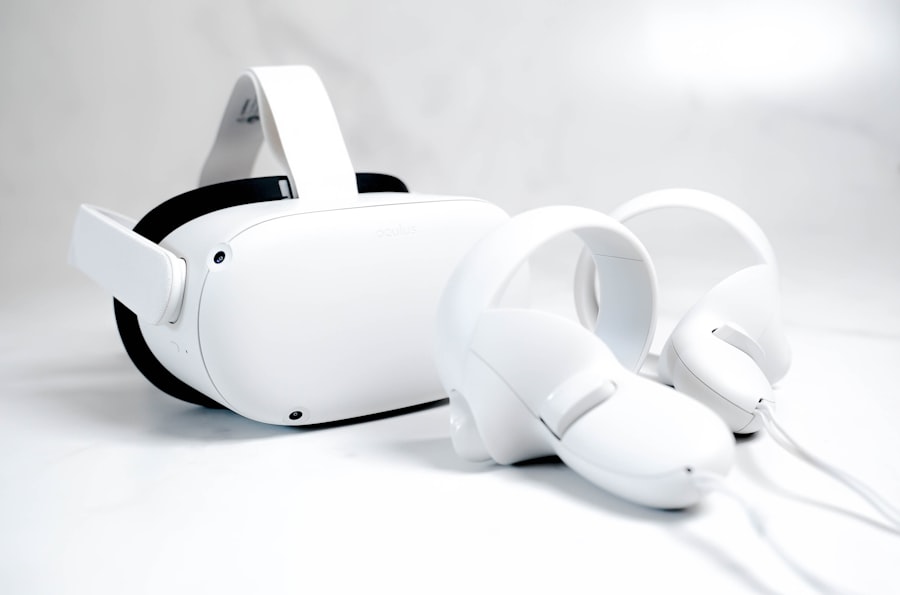The Frame Metaverse represents a new frontier in digital interaction, merging the physical and virtual worlds into a cohesive experience. It is an expansive, immersive environment where users can engage with one another and digital content in real-time, utilizing advanced technologies such as virtual reality (VR), augmented reality (AR), and mixed reality (MR). Unlike traditional online platforms, the Frame Metaverse emphasizes spatial computing, allowing users to navigate through three-dimensional spaces that mimic real-world environments.
This creates a sense of presence and community that is often lacking in conventional social media or online gaming platforms. At its core, the Frame Metaverse is built on the principles of interactivity and user-generated content. Users can create their own spaces, design experiences, and interact with others in ways that transcend geographical boundaries.
This digital universe is not just a static environment; it evolves based on user input and engagement. The Frame Metaverse is characterized by its ability to host a variety of activities, from social gatherings and educational workshops to business meetings and entertainment events. As technology continues to advance, the potential for the Frame Metaverse to become a central hub for digital interaction grows exponentially.
Key Takeaways
- The Frame Metaverse is a virtual environment that combines elements of augmented reality, virtual reality, and the physical world.
- Businesses can leverage the Frame Metaverse for marketing, customer engagement, and virtual product experiences.
- Ethical and privacy concerns in the Frame Metaverse include data security, virtual harassment, and digital property rights.
- Augmented reality plays a crucial role in enhancing the user experience and blurring the lines between the virtual and physical worlds in the Frame Metaverse.
- Users can create and customize their avatars to represent themselves in the Frame Metaverse, allowing for self-expression and identity exploration.
The Potential of the Frame Metaverse for Businesses
The Frame Metaverse offers businesses a unique opportunity to engage with customers in innovative ways. By establishing a presence within this digital landscape, companies can create immersive experiences that enhance brand loyalty and customer engagement. For instance, retailers can set up virtual storefronts where customers can browse products in a 3D environment, try them on using AR technology, and make purchases seamlessly.
This not only provides a novel shopping experience but also allows businesses to gather valuable data on consumer behavior and preferences. Moreover, the Frame Metaverse can serve as a platform for hosting virtual events, such as product launches or conferences. Companies can invite participants from around the globe to attend these events without the constraints of physical location.
This democratization of access can lead to increased participation and engagement, as attendees can interact with speakers and other participants in real-time. Additionally, businesses can leverage the metaverse for training and development purposes, creating simulated environments where employees can practice skills or learn new concepts in an engaging manner.

As with any emerging technology, the Frame Metaverse raises significant ethical and privacy concerns that must be addressed to ensure a safe and inclusive environment for all users. One of the primary issues revolves around data privacy. In a space where users interact extensively and share personal information, there is a heightened risk of data breaches and misuse of sensitive information.
Companies operating within the Frame Metaverse must implement robust security measures to protect user data and ensure compliance with regulations such as GDPR. Another ethical consideration is the potential for harassment or toxic behavior within virtual spaces. Just as online platforms have struggled with issues of bullying and harassment, the Frame Metaverse is not immune to these challenges.
Developers and businesses must establish clear guidelines for acceptable behavior and implement moderation tools to create a safe environment for all users. This includes providing users with the ability to report inappropriate behavior and ensuring that consequences are enforced consistently.
The Role of Augmented Reality in the Frame Metaverse
| Metrics | Data |
|---|---|
| Market Size | 50 billion by 2024 |
| AR Users | 1 billion by 2020 |
| AR Advertising Revenue | 2 billion by 2022 |
| AR Gaming Revenue | 11.6 billion by 2025 |
| AR in Healthcare | Expected to reach 5.1 billion by 2025 |
Augmented reality plays a pivotal role in enhancing the user experience within the Frame Metaverse. By overlaying digital information onto the physical world, AR allows users to interact with their surroundings in new and exciting ways. For example, users can point their devices at real-world objects to access additional information or engage with virtual elements that complement their environment.
This integration of AR into the metaverse creates a seamless blend of reality and digital content, enriching the overall experience. In practical terms, AR can be utilized for various applications within the Frame Metaverse. Educational institutions can employ AR to create interactive learning experiences, allowing students to visualize complex concepts in real-time.
Similarly, businesses can use AR for marketing campaigns that engage customers by providing interactive advertisements or product demonstrations. The potential for AR to enhance storytelling within the metaverse is also significant; creators can develop narratives that unfold based on user interactions with both virtual and physical elements.
Creating and Customizing Your Avatar in the Frame Metaverse
Avatars serve as digital representations of users within the Frame Metaverse, allowing individuals to express their identities in unique ways. The process of creating and customizing an avatar is not merely about aesthetics; it is an opportunity for self-expression and creativity. Users can choose from a wide array of features, including physical attributes, clothing styles, and accessories, enabling them to craft an avatar that reflects their personality or desired persona.
Customization goes beyond mere appearance; it also encompasses functionality within the metaverse. Users can equip their avatars with specific skills or abilities that enhance their interactions within various environments. For instance, an avatar designed for social interactions might have features that facilitate communication or collaboration with others, while an avatar tailored for gaming might possess enhanced agility or strength.
This level of personalization fosters a deeper connection between users and their avatars, making interactions within the Frame Metaverse more meaningful.
The Social Impact of the Frame Metaverse

The social implications of the Frame Metaverse are profound, as it has the potential to reshape how individuals connect and communicate with one another. In an increasingly digital world, the metaverse offers a space where people can forge relationships regardless of geographical barriers. This connectivity can lead to diverse communities forming around shared interests, hobbies, or professional goals.
Users can participate in virtual gatherings, collaborate on projects, or simply socialize in ways that transcend traditional social media platforms. However, this new form of social interaction also raises questions about authenticity and connection. While virtual interactions can foster relationships, they may lack the depth and nuance of face-to-face communication.
Users may find themselves grappling with issues related to identity and representation as they navigate their online personas.
Striking a balance between online engagement and offline connections will be crucial as society adapts to this new social landscape.
The Future of Entertainment in the Frame Metaverse
Entertainment within the Frame Metaverse is poised for transformation as creators explore new avenues for storytelling and engagement. Traditional forms of media such as film, music, and gaming are being reimagined through immersive experiences that allow audiences to participate actively rather than passively consume content. For instance, virtual concerts enable fans to experience live performances from anywhere in the world while interacting with other attendees in real-time.
Moreover, gaming within the Frame Metaverse is evolving beyond conventional gameplay mechanics. Developers are creating expansive worlds where players can collaborate on quests, build communities, or even create their own games within the metaverse. This shift towards user-generated content not only empowers players but also fosters a sense of ownership over their experiences.
As technology continues to advance, we can expect even more innovative forms of entertainment that leverage the unique capabilities of the metaverse.
How to Get Involved in the Frame Metaverse
Getting involved in the Frame Metaverse requires a combination of curiosity, creativity, and technological savvy. For those interested in exploring this digital landscape, starting with basic tools such as VR headsets or AR-enabled devices is essential. Many platforms offer free or low-cost entry points that allow users to familiarize themselves with the metaverse’s functionalities before diving deeper into more complex experiences.
Once equipped with the necessary technology, individuals can begin by creating their avatars and exploring various environments within the metaverse. Engaging with communities through forums or social media groups dedicated to metaverse discussions can provide valuable insights and connections with like-minded individuals. Additionally, aspiring creators can experiment with building their own spaces or developing content using available tools provided by metaverse platforms.
As participation grows, so too does the opportunity to shape this evolving digital universe collaboratively.
The concept of the metaverse has been a topic of much discussion and speculation in recent years.
In a related article on parallel worlds in the metaverse, the debate is explored further, shedding light on the possibilities and limitations of this virtual realm. As metaverse platforms and ecosystems continue to evolve, social virtual worlds are becoming more prevalent. To learn more about these platforms and their impact, check out this article on metaverse platforms and ecosystems. For those who are still unfamiliar with the concept of the metaverse, a comprehensive overview can be found in this article on what the metaverse is.
FAQs
What is the Frame Metaverse?
The Frame Metaverse is a virtual reality platform that allows users to interact with digital environments and other users in a 3D space.
How does the Frame Metaverse work?
The Frame Metaverse uses virtual reality technology to create immersive digital environments that users can explore and interact with using VR headsets and controllers.
What can users do in the Frame Metaverse?
In the Frame Metaverse, users can socialize with others, attend virtual events, play games, create and customize their own virtual spaces, and engage in various other activities within the digital environment.
Is the Frame Metaverse accessible on all devices?
The Frame Metaverse is primarily designed for virtual reality headsets, but it may also be accessible on other devices such as PCs and mobile phones.
Is the Frame Metaverse free to use?
The availability and cost of using the Frame Metaverse may vary depending on the specific features and services offered by the platform.

Leave a Reply